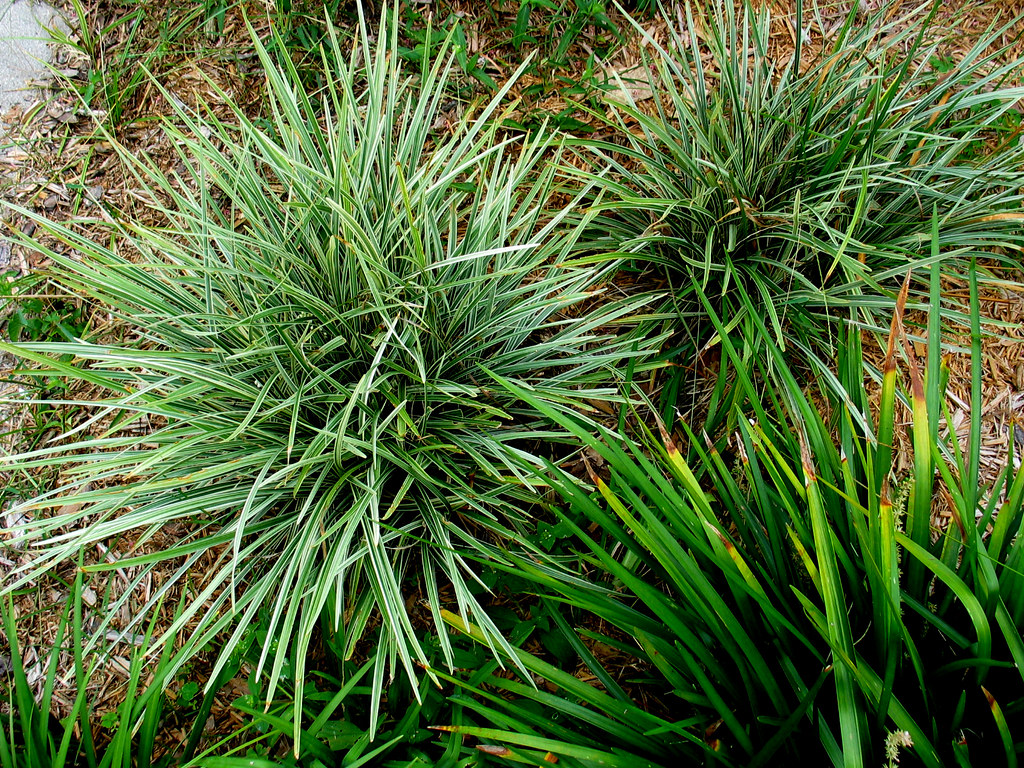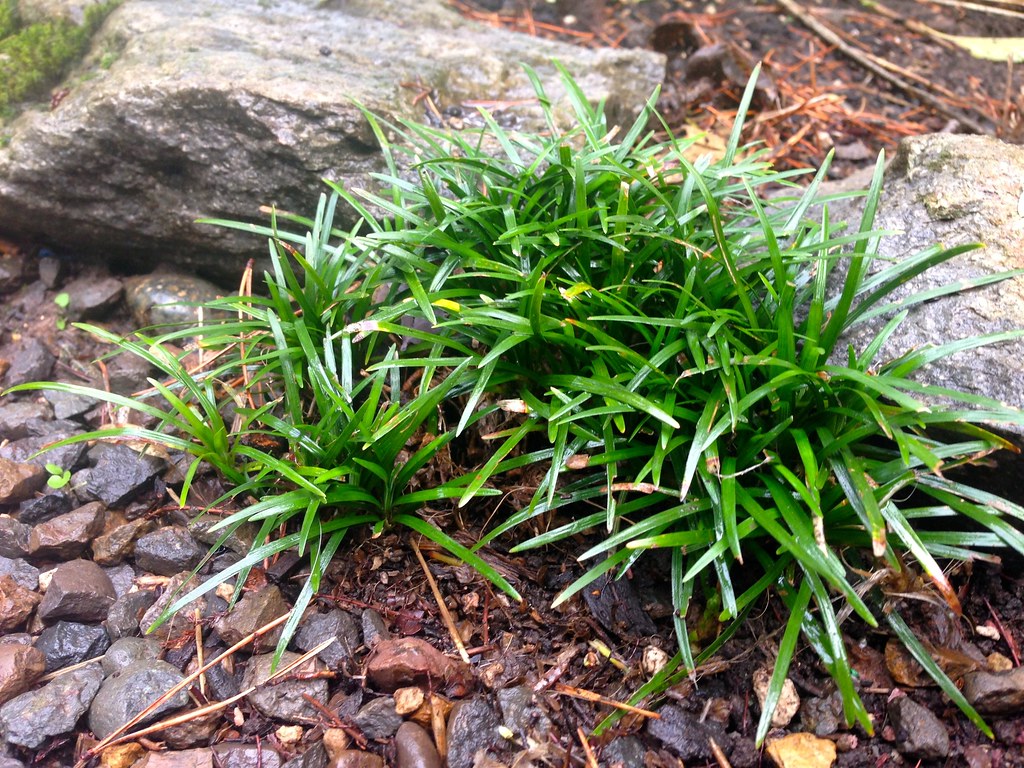Mondo grass, also known as Ophiopogon Japonicus, is a popular choice for gardeners looking to add a touch of elegance and beauty to their outdoor spaces.
This evergreen perennial is native to East Asia and is highly valued for its lush, dark green foliage. In addition to its aesthetic appeal, mondo grass is also a low-maintenance plant that can thrive in a variety of conditions.
Whether you’re a seasoned gardener or just starting, this comprehensive guide will walk you through the process of planting and caring for mondo grass to ensure its longevity and beauty in your garden.
| Characteristic | Description |
|---|---|
| Scientific Name | Ophiopogon japonicas |
| Common Name | Mondo Grass, Monkey Grass |
| Family | Asparagaceae |
| Type | Perennial ornamental grass |
| Height | Typically 6 to 12 inches; some varieties can reach 18 inches |
| Foliage | Dense, arching, strap-like leaves |
| Foliage Color | Dark green; some varieties have variegated foliage |
| Flowers | Small, bell-shaped, violet to lavender flowers on spikes |
| Bloom Time | Late spring to early summer |
| Sun Exposure | Part shade to full shade |
| Soil | Well-drained, moist soil; adaptable to various soil types |
| Watering | Regular watering, especially during dry periods |
| Hardiness Zones | USDA Zones 6-11 |
| Landscape Use | Ground cover, border edging, under trees, in rock gardens |
| Special Features | Low-maintenance, evergreen, forms dense clumps |
| Invasive Potential | Generally non-invasive; spreads slowly through rhizomes |
| Maintenance | Low; occasional dividing to control spread |
| Disease Resistance | Generally resistant to diseases |
Getting to Know Mondo Grass
To begin with, let’s familiarize ourselves with mondo grass before delving into the specifics of planting and taking care of it.
Mondo grass belongs to the Asparagaceae family and is not a true grass but a member of the lily family.
It forms dense clumps of narrow, arching leaves that can reach up to 12 inches in height. The leaves are generally dark green, which provides an eye-catching contrast to the surrounding plants and structures.
Mondo grass is a plant that produces small purple or white flowers on thin stalks during the summer months, in addition to its leaves.
These flowers eventually develop into shiny black berries, adding further visual interest to the plant. Mondo grass is well-known for its ability to create a luxurious, carpet-like effect when planted in mass, making it a popular choice for use as an edging, ground cover, or border plant.

Selecting the Right Variety of Mondo Grass
Like many other plants, mondo grass comes in different varieties, each with its unique characteristics. It’s important to choose the right variety based on your gardening goals and the specific conditions of your garden. Here are a few popular varieties of mondo grass to consider:
Dwarf Mondo Grass (Ophiopogon japonicus ‘Nana’):
This variety is the smallest of the mondo grasses, reaching a height of only 2-4 inches. It’s perfect for creating a low-maintenance ground cover or as an edging plant for pathways and borders.
Giant Mondo Grass (Ophiopogon jaburan):
As the name suggests, this variety is larger than its counterparts, growing up to 12 inches in height. It’s a great option if you’re looking to make a bold statement with mondo grass in your garden.
Black Mondo Grass (Ophiopogon Planiscapus ‘Nigrescens’):
This variety stands out from the rest with its dark purple to black leaves. It adds a touch of drama and contrast to any garden setting.
Variegated Mondo Grass (Ophiopogon Japonicus ‘Gyoku Ryu’ or ‘White Diamond’):
If you’re looking for a splash of variegation, these varieties feature cream or white stripes on the leaves, adding a vibrant and eye-catching element to your garden.
Consider the growth habits, color, and ultimate size of the varieties before making your selection. This will help you choose the best option to suit your garden’s aesthetic and maintenance requirements.
Planting Mondo Grass Seeds
Now that you’ve chosen the right variety of mondo grass seeds, it’s time to learn how to plant them effectively. Follow these step-by-step instructions to ensure successful establishment and growth:
Step 1: Site Selection
Mondo grass thrives in partial to full shade, making it an ideal choice for shaded areas in your lawn. However, it can also tolerate some sun, particularly in cooler climates.
Select a location on your lawn that receives indirect sunlight for at least a few hours a day. It’s important to note that variegated varieties may require more sunlight to maintain their vibrant colors.
Step 2: Soil Preparation
Mondo grass seeds prefer well-draining soil with a slightly acidic to neutral pH level. To prepare the soil, remove any weeds or debris from the planting area and loosen the soil with a garden fork or tiller. Incorporate organic matter such as compost or aged manure to improve soil structure and fertility.
Step 3: Digging the Hole
Dig a hole that is twice the width of the nursery container and just as deep. This will provide ample space for the roots to spread and establish. If planting multiple mondo grass plants, space them about 6-8 inches apart to create a dense and uniform look.
Step 4: Planting
Carefully remove the mondo grass from its container, gently teasing out any tangled roots. Place the plant in the prepared hole, ensuring that the top of the root ball is level with or slightly above the surrounding soil. Backfill the hole with soil, firming it gently around the plant to eliminate any air pockets.
Step 5: Watering and Mulching
After planting, thoroughly water the mondo grass seeds to settle the soil and eliminate any remaining air pockets.
Mulch the area around the plant with a layer of organic mulch, such as wood chips or straw, to conserve moisture, suppress weed growth, and maintain a consistent soil temperature.
Caring for Mondo Grass
Once your mondo grass is planted, it’s essential to provide proper care to promote healthy growth and maintain its attractive appearance. Here are some important care guidelines to keep in mind:
Watering
Mondo grass thrives when provided with regular moisture, but it can also tolerate moderate drought once it’s established.
It’s best to water it deeply and consistently, ensuring that the soil remains moist, but not excessively waterlogged. Overwatering can cause root rot and other fungal diseases, so it’s important to avoid it.
During times of extreme heat or prolonged drought, you should water the plant manually to supplement rainfall and prevent it from drying out. Additionally, watering the plant at the base is crucial to lower the risk of foliage diseases.
Fertilization
Mondo grass generally doesn’t require frequent fertilization. However, applying a slow-release, balanced fertilizer in spring can provide the necessary nutrients for healthy growth. Follow the manufacturer’s instructions for application rates and frequencies.

Pruning and Maintenance
One of the main advantages of mondo grass is its low-maintenance nature. However, occasional pruning can help keep the plant looking its best.
Remove any dead or yellowing leaves to maintain a tidy appearance and promote new growth. Use clean, sharp pruning shears to avoid causing damage to the plant.
Division and Propagation
Over time, mondo grass tends to form tight clumps that can become overcrowded. Dividing the plant every few years not only helps rejuvenate its growth but also provides an opportunity to propagate new plants.
To divide mondo grass, dig up the clump and carefully separate it into smaller sections, each with an equal share of foliage and roots. Replant the divisions in suitable areas, ensuring they have enough space to spread and develop.
Pests and Diseases
Mondo grass is generally not susceptible to many pests and diseases. However, regular inspections are essential to identify and control any potential issues.
Keep an eye out for common garden pests like slugs, snails, and aphids, and take appropriate measures if infestations occur.
Additionally, ensure proper air circulation and avoid overwatering to prevent fungal diseases like leaf spot and root rot.
Conclusion
Mondo grass is a versatile and visually striking plant that can enhance the beauty of any garden. From its elegant foliage to its low-maintenance nature, it’s no wonder why many gardeners choose to include mondo grass in their landscapes.
By carefully selecting the right variety, following proper planting techniques, and providing adequate care, you can enjoy the lushness and beauty of mondo grass in your garden for years to come. So go ahead, add a touch of elegance to your outdoor space with mondo grass, and watch it thrive!
People also ask
Where does Mondo grass grow best?
Mondo Grass (Ophiopogon japonicus) grows best in shaded to partially shaded areas. It thrives in well-drained, moist soil and is often used as a ground cover in landscapes, under trees, or in rock gardens.
What is Mondo grass in Japanese?
In Japanese, Mondo Grass is known as “Ryukyu Sasa” or “Ryukyu Mondo.” The term “Ryukyu” refers to the Ryukyu Islands in Japan.
What are the cons of mondo grass?
While Mondo Grass is a popular ornamental plant, some considerations include its relatively slow growth rate, especially in colder climates. In extremely cold regions, it may experience winter dieback. Additionally, if planted in overly wet or poorly drained soil, it may be susceptible to fungal diseases.
Does mondo grass spread?
Yes, Mondo Grass spreads slowly through underground rhizomes. While it forms dense clumps, it is generally considered a non-invasive ground cover.
Does mondo grass like sun or shade?
Mondo Grass prefers shaded to partially shaded areas. It can tolerate some morning sun but generally thrives in locations with filtered or indirect light.
How tall does mondo grass get?
Mondo Grass typically grows to a height of 6 to 12 inches, and some varieties can reach up to 18 inches.
Is mondo grass invasive?
Mondo Grass is generally not considered invasive. It spreads slowly and forms clumps, making it a well-behaved ground cover. However, it’s important to note that some varieties may have different growth habits, so choosing a non-invasive cultivar is advisable if there are concerns about spreading.
